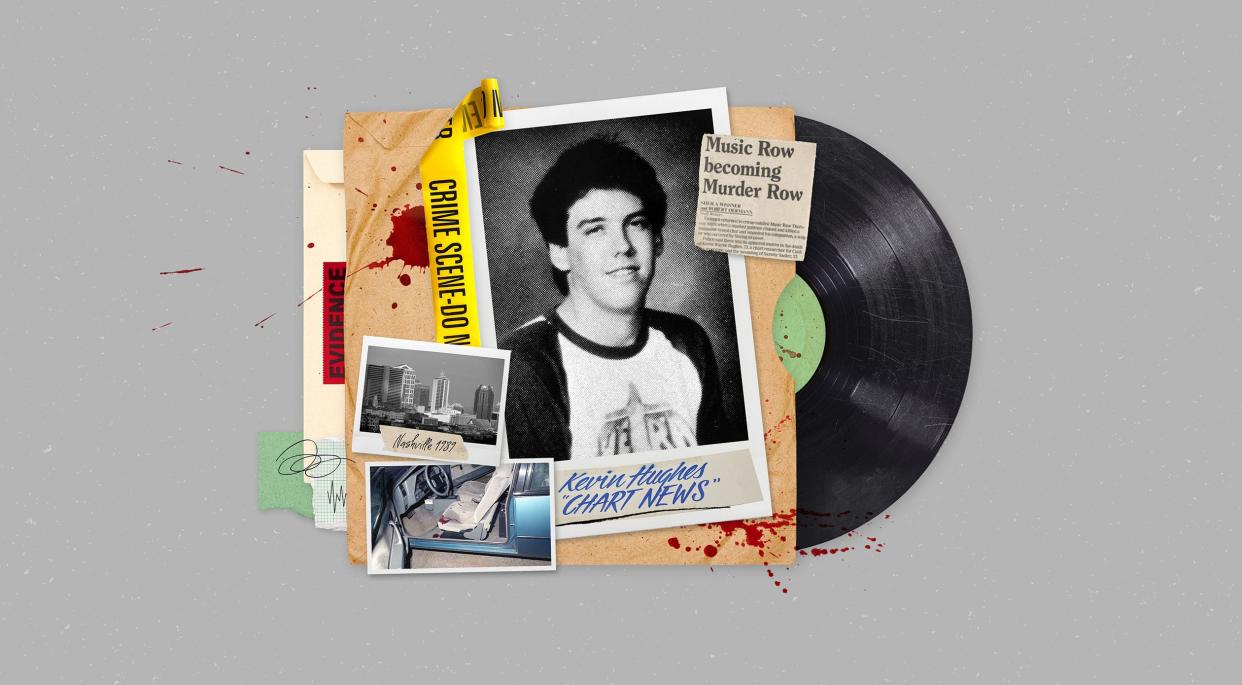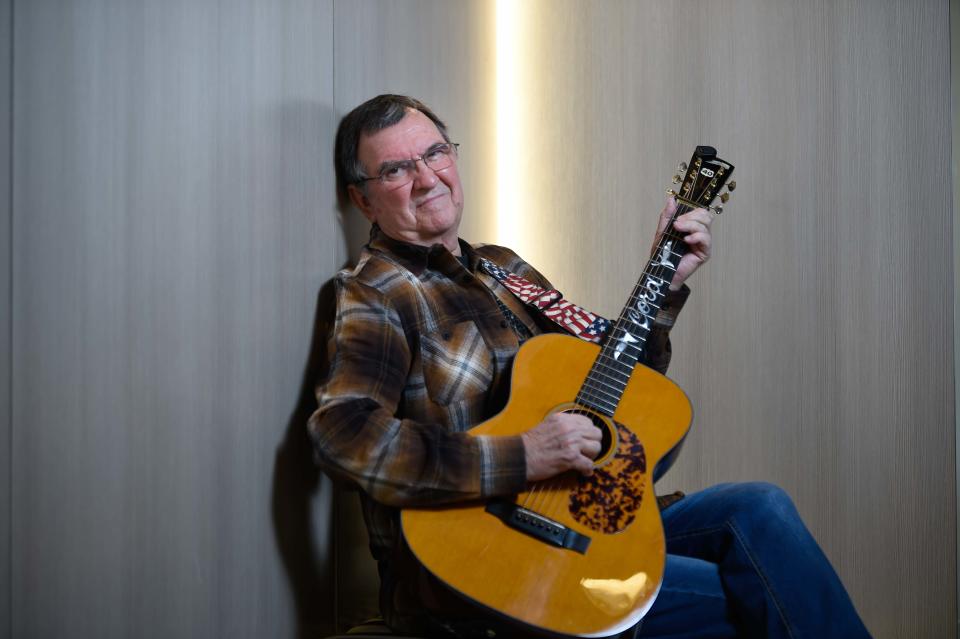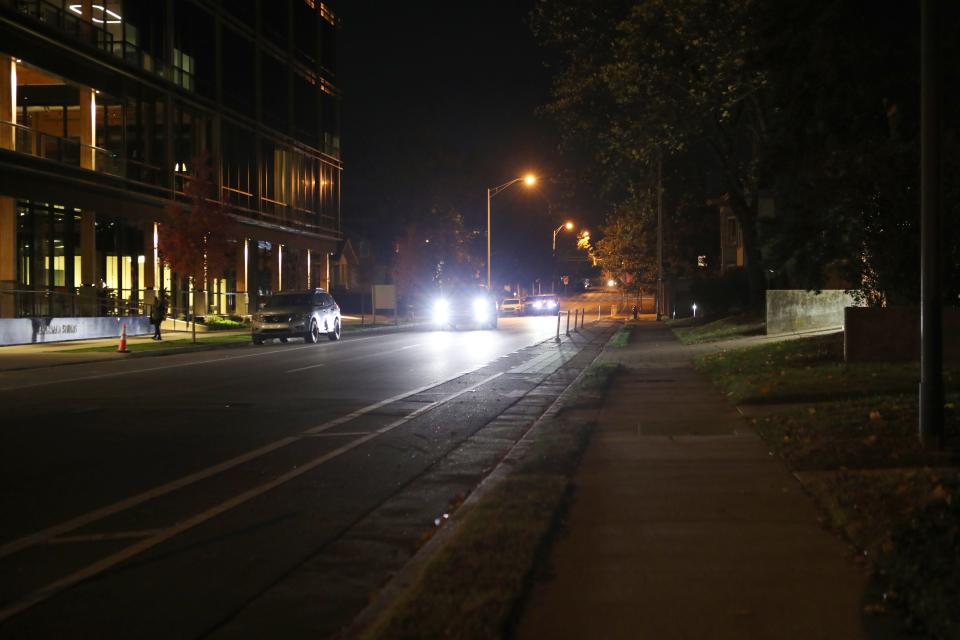Murder on Music Row: Shots in the heart of country music disrupt the Nashville night

This is the first in an eight-part series exploring the 1989 murder of Kevin Hughes, a country music chart director who knew too much.
A young man ran for his life on 16th Avenue South, chased by a nightmarish figure with a blue steel pistol, a black ski mask and a strange side-to-side limp.
One shot hit Kevin Hughes in the back, piercing his left shoulder blade, and knocking him off his feet.
Hughes was a 23-year-old Christian kid with a mullet and a “Dirty Dancing” key fob. He had come to Nashville to break into the business side of the music industry with his eye on working for the Gospel Music Association. His fatal flaw was that he learned too much about this town’s secrets.
Listen now: Murder on Music Row from The Tennessean, Episode 1: There ain't no justice in it
The gunman stood over Hughes, who was sprawled face down on the pavement. Witnesses said Hughes never looked up. He covered the back of his head with his hands. He may have said a prayer.
The gunman pointed the barrel at Hughes’ head and fired two more shots.
Execution style.
Subscribe now: Get exclusive access to The Tennessean's Murder on Music Row investigative series
'They got away with murder down on Music Row'

It is impossible to separate Kevin Hughes from the sensational place in which he died.
On March 9, 1989, Hughes was gunned down on the street in front of the office of Bug Music, which owned the rights to classic songs like “Fever,” “What a Wonderful World,” “I Walk the Line” and “Summer in the City.”
The witnesses included a young singer-wannabe named Faith Hill who heard the gunshots, ran to the scene and saw Hughes take his last breath. The shooting interrupted Willie Nelson and Kris Kristofferson, who were recording the newest Highwaymen album a few hundred feet up the block.
The life-and-death drama played out in the heart of country music.
There was even a song, written 10 years after the murder.
It was about a murder in which the suspect seemed to disappear into the night, and the weapon was never found. Songwriters Larry Cordle and Larry Shell collaborated on that banger of a tune, which sounded eerily similar to real life.

They called it “Murder on Music Row.”
“Nobody saw him running from 16th Avenue.
Nobody found a fingerprint or the weapon that was used.
But someone killed country music, cut out its heart and soul.
They got away with murder down on Music Row.”

Hughes’ death and the ensuing homicide investigation would prove to have far-reaching implications. For lead homicide Det. Bill Pridemore, it would become a 14-year, multi-state drama that left many unanswered questions and many people angry about the ineffectiveness of the justice system.
Among those angry people is Sammy Sadler, a singer who was with Hughes on the night he was killed.
“I still think they (the Metro Nashville police) owe me an apology,” said Sadler, who became a suspect in the case. “I still think they handled it wrong. They put me and my family through stuff we shouldn’t have had to go through.”
Pridemore, long retired, did not apologize.
“The whole case, the whole time, I was thinking he (Sadler) was lying,” Pridemore said in an interview with The Tennessean.
Sadler wasn’t the only focus of the investigation.
Pridemore, his partner Det. Pat Postiglione and a phalanx of other detectives discovered a love triangle, a secret family, connections to a Mexican drug cartel, a hat honoring WWII veterans and one very important hair follicle from a house cat.
They found a seedy subsection of the independent music business that may have benefitted from Kevin Hughes’ death.
This case could have become the lightning rod that changed Nashville, ferreted out corruption, and cleaned up the industry.
But it did not.
The industry kept on keeping on.
The homicide would focus the glare of suspicion on several people who didn’t appreciate the attention. Were they killers, accomplices or just murder-adjacent? And, for all the people who knew who committed the crime and didn’t come forward, why not?
Were they protecting themselves, or more broadly, a way of life inside the Nashville music scene?
If not for a longshot investigative miracle, it’s likely no one would have faced justice in this case.
It could also be true that there were people involved in the homicide who have gotten away with their complicity for all these years.
Just wait until you see the facts that no one has ever reported.
Losing grit and steel guitars

At 10:25 p.m. March 9, 1989, gunfire disrupted a chilly Thursday night in what would become one of the most important months of Nashville history.
Nashville then was not like Nashville now.
In the 1980s, Nashville had dirt under its fingernails, holes in the soles of its boots, a frayed brim on its cowboy hat. Music City then was always woozy from two shots of rot gut whiskey and an angry call from a jilted lover across town. In its shadows lurked some fringe characters who would take your money or your life and smile while they were doing it.
In the 1980s, Nashville music was losing its grit and steel guitars. The country hits of the '80s were less about drinkin', cheatin', outlawin’, torment and pain than they were about how wonderful it feels to fall in love. The top songs were often as pretty as wildflowers, which was the name (“Wildflowers”) of a Dolly Parton, Linda Ronstadt, Emmylou Harris song that rose to No. 6 on the Billboard country chart in 1988.
Something started to change in March 1989.
Three days before Kevin Hughes was gunned down on Music Row, a twangy bar crooner from Oklahoma released a song called “Much Too Young (To Feel This Damn Old).” The Nashville newcomer had worked for a time in a boot store because he was having trouble making it as a performer.
He had recorded “Much Too Young,” the tale of a worn out rodeo cowboy and reference to songwriter/rodeo champion Chris LeDoux, while he was still bouncing around college towns in 1987. The song was simply a Stillwater bar circuit favorite until Capitol Records got involved.
It became the first single from an album called "Garth Brooks."
A murder investigation and a miraculous rise to stardom were about to happen at the same time in Nashville.
Brooks’ first single was released on March 6, 1989. Three days before the homicide.
Nineteen days later, "Much Too Young" debuted at No. 94 on the Billboard Magazine country music chart.
It was almost as if that song was the first ripple in a wave that changed Nashville from a million dollar town to a billion dollar town.
Today, everybody knows about Garth Brooks, whose perceived sincerity is the superpower that connects him with audiences around the world.
But not enough people know the story you’re about to read.
It’s about what happened to Kevin Hughes, whose integrity got him killed.
What police didn’t know at the time they arrived is that there were two trails of blood on the ground that night.
One that began under the head of Kevin Hughes.
That second trail of blood led them in a direction they never thought they would be going.
This article originally appeared on Nashville Tennessean: Murder on Music Row: Shots in Nashville disrupt country world

